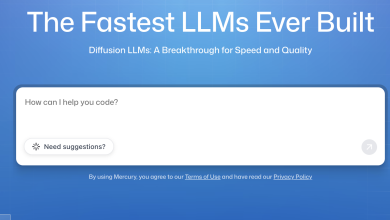The Architecture, Engineering, and Construction (AEC) sector is experiencing a transformative technological shift, rooted in the convergence of artificial intelligence (AI), real-time on-edge spatial computing, and robotics. As industry demands grow more complex, and as expectations for precision, speed, and sustainability rise, AEC professionals require new tools that go beyond incremental improvement. At NavLive, we believe that AI-powered spatial intelligence will become the foundational layer for the next generation of the built environment.
NavLive was born out of robotics research conducted at Oxford University, the same state-of-the-art research being applied to self-driving vehicles. Our mission has been to take these breakthrough technologies and apply them to the challenges faced by AEC professionals every day. At the heart of our platform lies our proprietary Simultaneous Localization and Mapping (SLAM) algorithm. This algorithm fuses multi-sensor data with AEC-specialised Visual Learning Models (VLMs), enabling highly advanced semantic understanding of buildings and infrastructure in real time. When combined with powerful on device Nvidia hardware, this allows for site scanning, classification, and BIM-ready modelling, all executed directly from a handheld device.
Replacing Legacy Surveys with Real-Time Intelligence
Traditionally, the early stages of a construction or renovation project have been plagued by inefficiencies. Weeks are lost waiting for third-party surveyors to collect, process, and deliver site data. The resulting delays not only elongate timelines but limit early design iterations, often distancing clients from the creative and collaborative aspects of their own projects.
With AI-enabled scanners, like those developed by NavLive, AEC professionals can capture and interpret the built environment themselves, in real time and with centimetre-level accuracy. Our mobile platform replaces the fragmented workflows and static tripods with a unified solution: capturing 2D and 3D spatial data, auto-classifying building elements (walls, doors, MEP systems), and exporting in industry-standard CAD formats in real time. This immediate availability of high-fidelity data facilitates early design decisions, accelerates stakeholder feedback, and significantly reduces the need for rework downstream.
Seamless Scan-to-BIM Integration
NavLive’s SLAM and deep learning technologies provide far more than geometric information, they enable semantic understanding of a building. Our platform recognises architectural components in their environmental context, interpreting complex site geometry into structured BIM-compatible layers automatically. What once took days of manual modelling by trained specialists is now achieved autonomously in the field.
This real-time scan-to-BIM pipeline not only enhances productivity but also reduces risk. By embedding live, accurate spatial data directly into BIM platforms, NavLive ensures that all design and construction decisions are grounded in current site conditions. This dynamic fidelity minimizes inconsistencies between digital and physical environments and allows for early detection of potential spatial conflicts, significantly improving coordination across architecture, engineering, and contracting teams.
Creating a Living Spatial Truth
Perhaps most transformative is the ability of AI scanning platforms to produce a living, evolving spatial record, or spatial truth. Unlike traditional models that freeze a project in time, NavLive’s dynamic SLAM maps evolve alongside the asset. They document structural changes, MEP updates, and operational shifts over time, providing a reliable, high-resolution foundation for asset management, predictive maintenance, regulatory compliance, and even insurance documentation in the future.
This continuous feedback loop is essential in supporting long-term building performance, particularly as the industry moves toward net-zero targets and more circular asset strategies. By equipping buildings with an enduring digital twin, NavLive empowers owners and operators to make data-driven decisions that improve efficiency, reduce lifecycle costs, and enhance sustainability.
Powering the Next Generation of Built Environments
NavLive has secured $5 million seed round led by top AEC and deep tech US and UK based institutional investors to accelerate the development and deployment of our technology across global AEC markets. This funding has enabled us to scale our hardware-software stack and expand our capabilities in large-scale commercial projects. Our clients, including tier-one architecture and engineering firms, are already using NavLive to complete site surveys in a fraction of the time and cost, while delivering improved client outcomes through earlier engagement and richer data integration.
Looking forward, we envision our platform enabling even more sophisticated spatial operations: from AI-assisted generative design to autonomous construction validation, and real-time collaboration between teams distributed across locations.
Summary
The future of AEC will be built on real-time data, intelligent automation, and scalable collaboration. AI-powered scanners, like those developed at NavLive, are not simply tools of convenience, they are catalysts for structural transformation across the industry. By merging cutting-edge robotics, computer vision, and edge AI with deep AEC domain knowledge, we are not just speeding up surveys, we are redefining how spatial data is understood, documented, and managed across its lifecycle.
For firms ready to lead rather than follow, adopting AI scanning technology is no longer optional. It is the foundation of a smarter, more resilient, and more responsive built environment.





